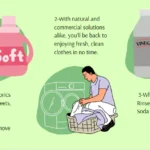How to paint Furniture? is most hardest question we all go through. When I painted my first table was very tough for me ,cuz I painted many layers that made it very sticky and weird to look. But now, after 5 years of experience, I can totally guide you through my learnings.
You can bring new life into your furniture by just painting it,I think painting tells the story of your mood like what your mood is this summer or spring,anyone can guess through paint in your home. That’s why I love painting the home with colors and decor.
In this guide I will tell you about how to paint your furniture, whether its laminate,your patio furniture or could be your indoor or outdoor. All furniture pieces are made of different materials, so they need different techniques and tips to paint and update , and even each piece needs different tools to paint it.
You can skip use the TABLE OF CONTENT for different kind of furniture painting.
Solid Wood (Timber/Natural Wood) Furniture
Preparation:
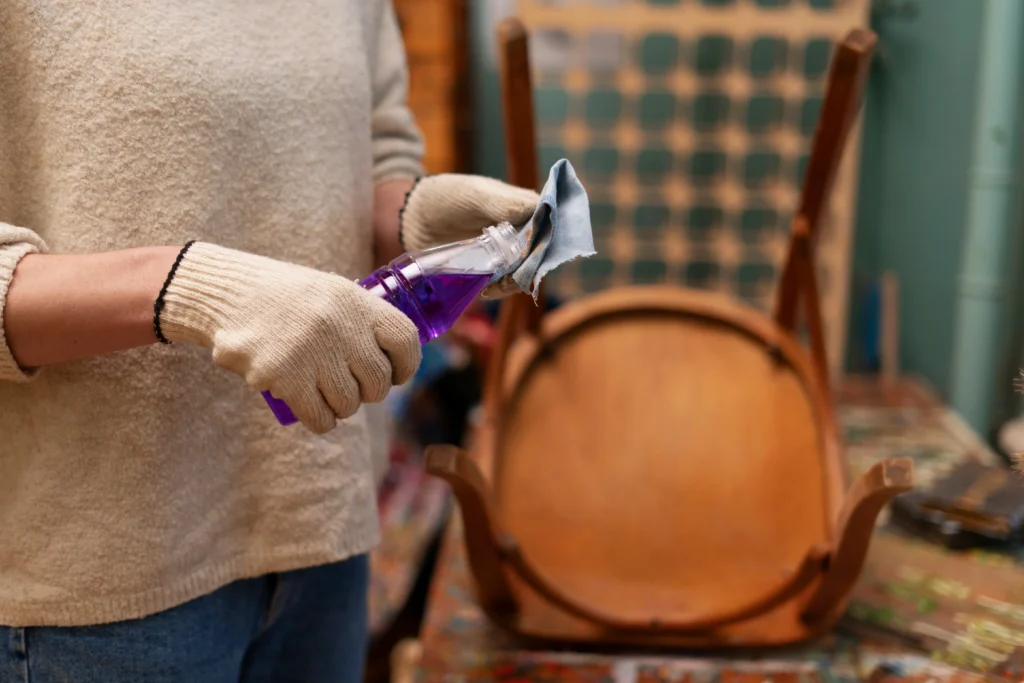
Use sanding (coarse grit, then finer) to remove any existing finish or flaking paint. Make sure you clean the surface of dust, grease or mildew using a gentle cleaner or TSP substitute and a rag.
Lightly sand all surfaces with 180–220 grit sandpaper (“scuff-sanding”) to give the new paint “teeth”. Use a vacuum to wipe off all the dust. If painting outdoors, pressure-wash or scrub the wood first to remove weathering, algae or mildew. Fill all the cracks with wood filler.
Materials & Tools:
- Sandpaper: 80–120 grit for heavy stripping; 180–220 grit for final sanding.
- Cleaner: Degreasing cleaner or mild detergent (e.g. TSP substitute).
- Primer: Interior wood primer (acrylic latex) or exterior primer (for outdoor use); use a shellac-based primer (Zinsser BIN) for knotty/tannin woods, or a high-bonding primer (Zinsser STIX, Kilz Adhesion) on glossy or very hard wood.
- Paint: High-quality furniture paint. For indoor pieces, waterborne alkyd or acrylic-latex paints (e.g. Benjamin Moore Advance, Sherwin–Williams ProClassic) give a smooth, durable finish. For outdoor wood, use exterior-grade latex or oil-based enamel (Sherwin’s SuperPaint Exterior, BM Aura Exterior).
- Application: Quality bristle brushes and/or mini rollers (foam or smooth nap) for edges, plus sanding sponge or block. Drop cloths, masking tape, and respirator/mask for safety.
- Finishing: (Optional) Clear topcoat (water-based polyurethane or varnish) for extra durability on high-wear surfaces.
Step-by-Step:
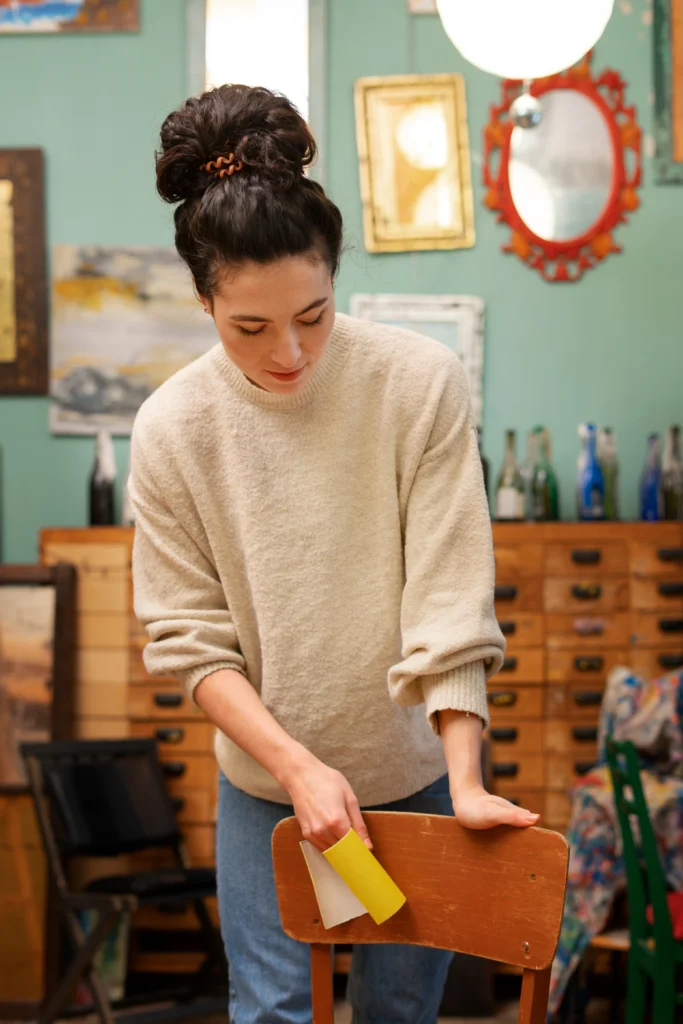
- Clean & Sand – As I told you before remove all the lacking paint and wipe of or vacuum all the dust and if there’s any grease use any TSP cleaner of bleach.
- Prime – If the wood is bare or stained then apply the primer on the whole piece of furniture. For outdoor furniture, use an exterior primer (oil-based for maximum moisture-blocking). Tip: Prime the underside and back first, then flip and prime the front, to avoid drips. You can go to next step if the primer is fully dried.
- Light Sand – Its the optional step to lightly sand the dried primer with fine sandpaper (220–320 grit) to remove any raised grain or bubbles, then dust off.
- Paint – First Coat: With brushing or rolling with grain apply your very first coat of paint on the furniture. I think you should avoid rolling the brush. For complex pieces, a foam roller yields a smooth finish. Tip: Work top-down (paint underside first) so drips can be covered on the last coat.
- Paint – Additional Coats: After the first coat dries (see manufacturer’s instructions), apply a second coat (and third if needed) for full coverage. Wait at least 12–24 hours between coats; I recommend waiting a full day between coats for best results.
- Dry/Cure: Let the painted piece dry fully before heavy use. Even “dry” paint can take 3–7 days or maybe longer if the weather is not good or humid. For outdoor furniture, keep pieces indoors or covered until completely dry to avoid rain or dew.
- Reassemble: Reattach hardware and return to use only when paint is fully ok to use.
Best Paint & Primer for Wood Furniture
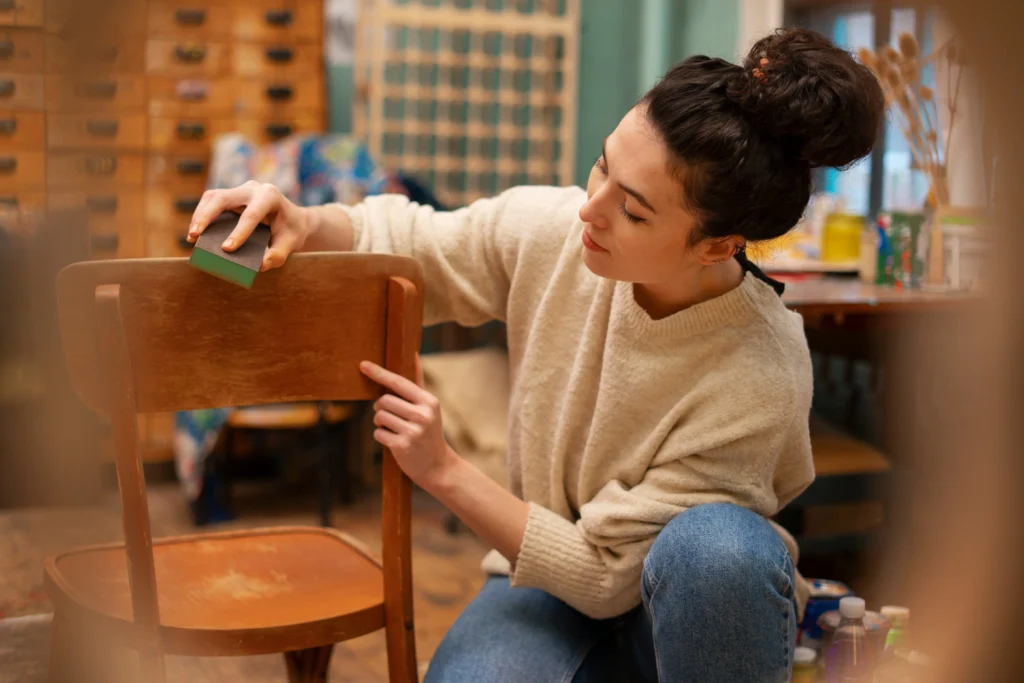
An appropriate primer can give you good adhesion. For wood, oil-based primers like Kilz Original, Zinsser BIN shellac primer ,block stains and seal knots, while in latex primers like Kilz 2, Zinsser Bulls Eye 1-2-3, are easy to clean.
For new and glossy surfaces bonding primers like Zinsser STIX, INSL‑X Stix accept paint. Choose paint based on use: oil-based (alkyd) enamel is very durable and smooth but slower-drying, while water-based acrylic/latex dries faster and has low odor.
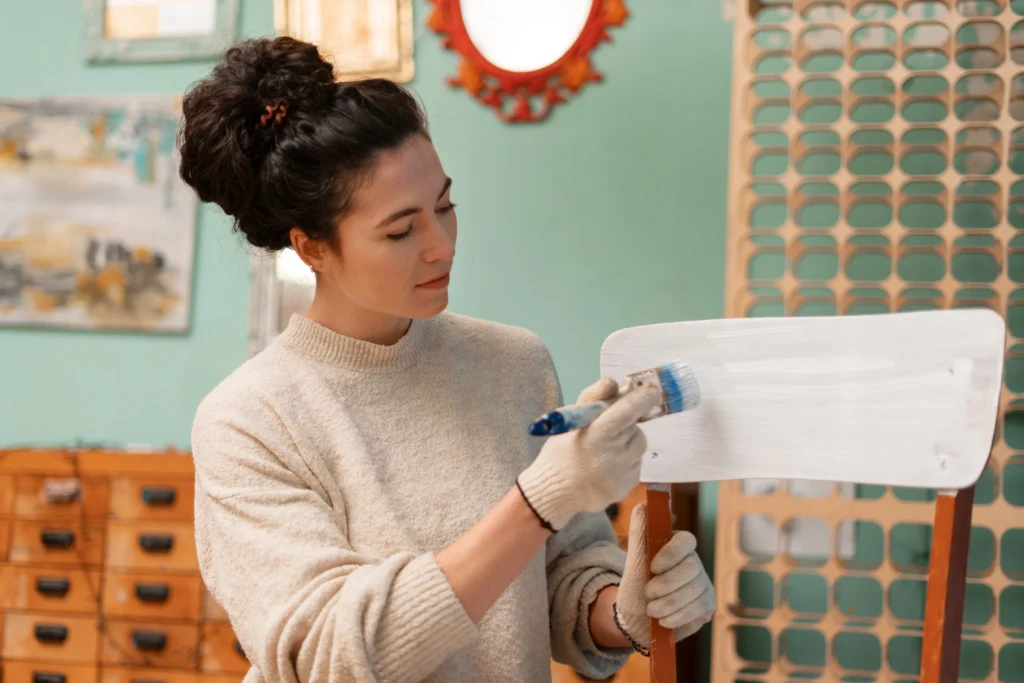
(Acrylic/alkyd blends like Benjamin Moore Advance give brush-level finish with water cleanup. Exterior latex or exterior oil enamel is required for outdoor wood and furniture. Semi-gloss or satin sheens are good for furniture; glossier finishes wear best.
Chalk- or milk-based paints (e.g. Annie Sloan Chalk Paint, General Finishes Milk Paint) which are very matte and easily sanded back for distressing, are very good for a vintage/distressed look. One can use, then seal with wax or poly.
Longevity & Curing:
Proper curing and protection are key. For outdoor wood, multiple coats of exterior paint usually suffice – no extra clear sealer is typically needed. Moisture kill your outdoor furniture so the primer is primary and make sure you are not forgetting it.
Allow paint to cure (a week or more) before exposing it to weather. For indoor wood painted with chalk or milk paint, apply a clear topcoat (polyurethane or clear wax) to protect the finish. In humid or high-traffic areas, consider a durable polyurethane or Varathane finish.
Finishes (Matte, Satin, Gloss, Distressed):
- Matte/Eggshell: Subtle look; hides small imperfections. Chalk and milk paints are inherently matte. Good for a vintage feel or if you’ll distress/sand edges after painting.
- Satin/Semi-Gloss: Most popular for furniture – slightly shiny and washable. Reflects light, shows wood grain slightly (under paint). Very durable.
- High Gloss: Very shiny and hard; often used on cabinets and trim. The gloss surface is tougher but will show brush marks more.
- Distressed: For a “shabby” look, paint with your base color, then cover with a top color (or layer two colors), and sand edges/corners back to reveal the base/wood. After distressing, protect the finish with wax or poly. Chalk paint and glazing waxes work well for this technique.
Recommended Paint and primer for wood furniture
Many brands make furniture-friendly paints. Common recommendations include Zinsser BIN (shellac primer), Kilz Premium (all-purpose primer), and INSL-X Stix (bonding primer) for the prime coat.
For paint: Benjamin Moore Advance or Regal Select, Sherwin–Williams Emerald or SuperPaint, Valspar Cabinet & Furniture Enamel, General Finishes Milk Paint or High Performance, and chalk/milk paints like Annie Sloan, Fusion Mineral Paint, or Rust-Oleum Chalked are popular.
For outdoor wood: Benjamin Moore Aura or Sherwin SuperPaint Exterior (acrylic), or Rust-Oleum Stops Rust (alkyd) are well-reviewed.
Finish coats: Minwax/Varathane Polyurethane (water-based for clarity), General Finishes High Performance Topcoat, or clear waxes (Minwax Paste Finishing Wax) can be used to seal.
How to Paint Laminate Furniture
Preparation:
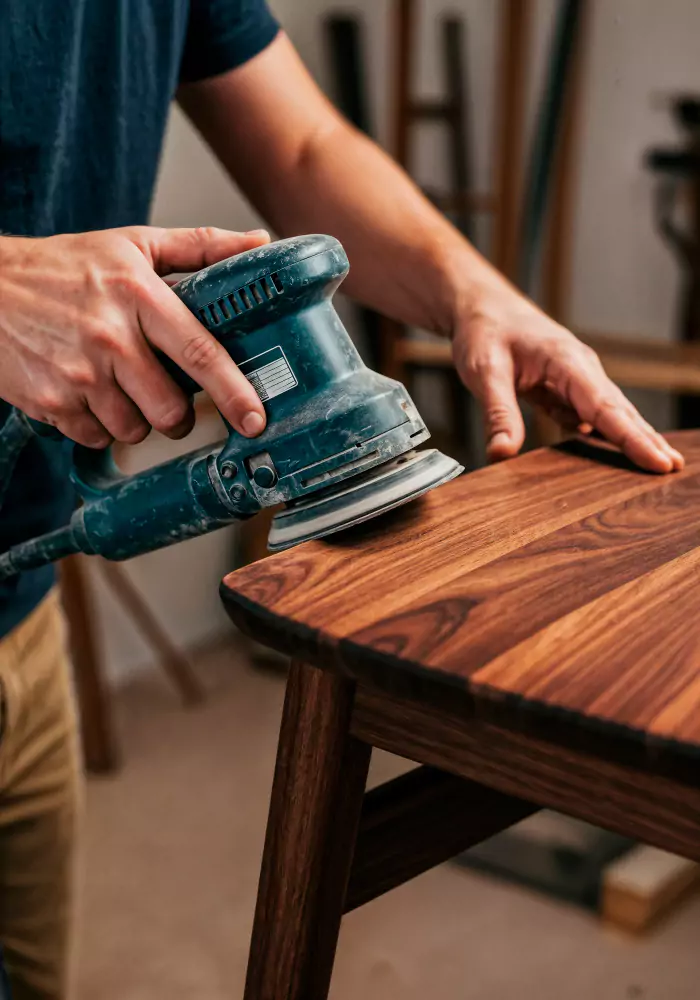
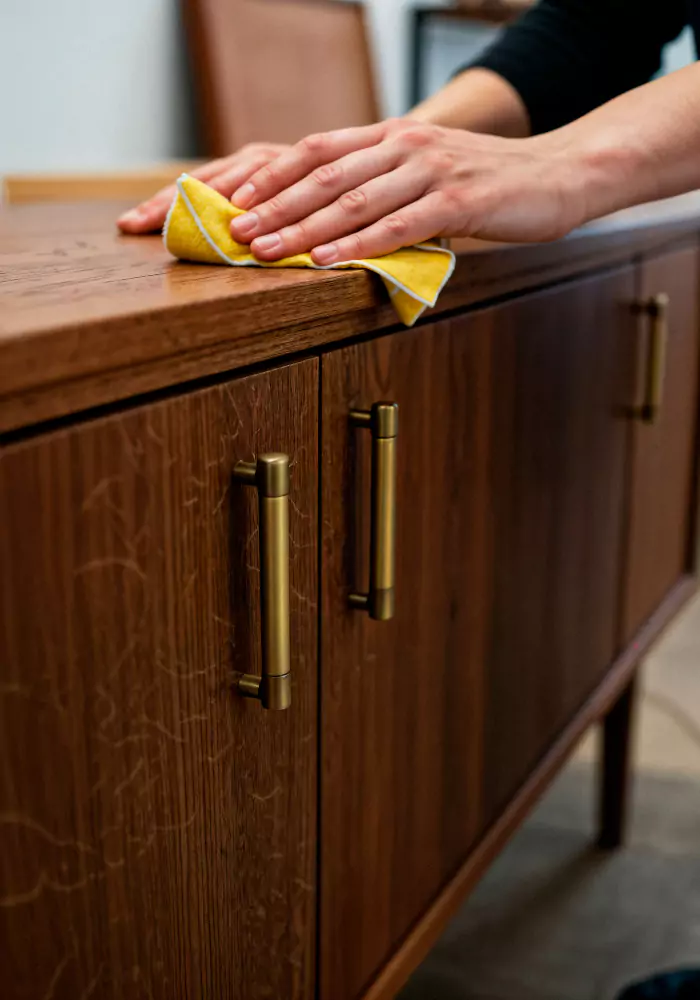
Cleaning a laminate dresser before sanding and painting. Laminate (a thin plastic or resin coating over particleboard) must be deglossed and cleaned. Wipe all surfaces with a damp cloth or degreaser to remove dust, oil and grime.
Sand the laminate lightly with 220–320 grit sandpaper (scuff sand) to dull the shiny finish. Vacuum or wipe away the sanding dust. Do not try to stain laminate – it’s not porous enough.
Applying bonding primer to a sanded laminate surface. Next, prime with a high-adhesion bonding primer. Benjamin Moore recommends INSL-X® STIX Primer for laminate. Apply primer in a thin, even coat with a brush or smooth roller, covering all sanded areas. Let the primer dry fully (per label instructions). This adhesive primer creates a surface the paint can grip, even on slick laminate.
Painting primed laminate with enamel paint. Paint the primed surface with an enamel or acrylic-latex cabinet paint. Use a good brush or smooth roller to apply a thin first coat (brush strokes should level out if the paint is thin enough).
Benjamin Moore suggests using Advance® Interior Paint or INSL-X® Cabinet Coat. After the first coat dries (typically overnight), apply a second coat for full coverage; in many cases a third coat is needed. Wait 24 hours between coats for best adhesion.
Tools & Materials:
Rags, mild cleaner, 220+ grit sandpaper, tack cloth, INSL-X Stix or Zinsser BIN primer. Also needed: high-quality brushes or rollers, drop cloths, and painter’s tape is optional. To make sanding faster use Sanding block or power sander with fine paper. Liquid deglosser can replace sanding, and is good for stubborn surfaces, but primer is still required.
Longevity & Curing
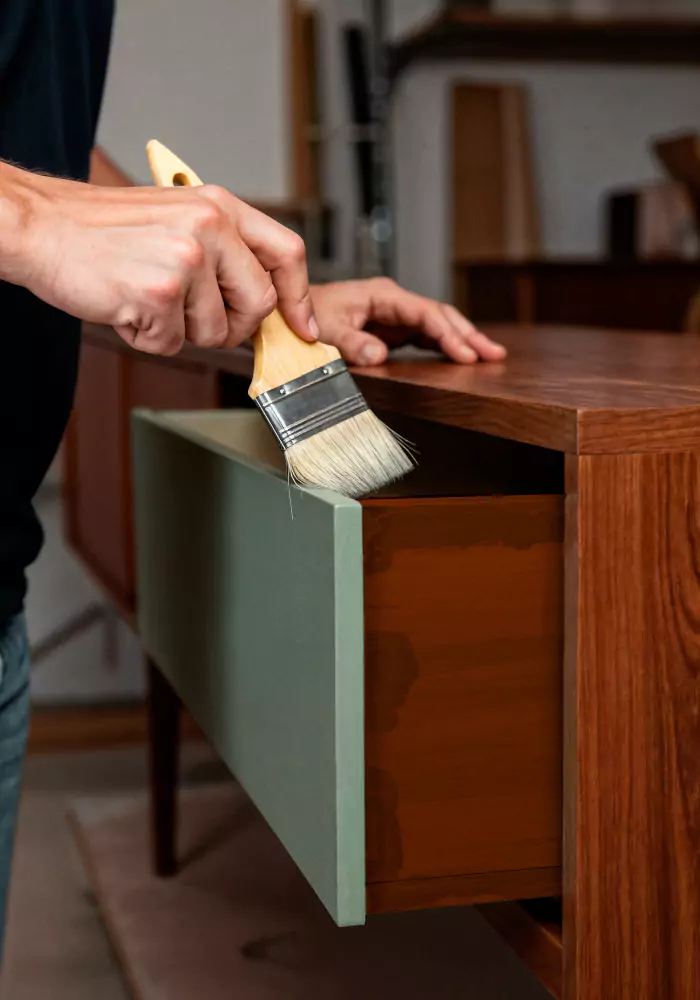
Allow each coat of primer/paint to fully dry. Laminate is typically used indoors, so moisture is less a concern, but a full 48–72 hours dry is needed before heavy use. Laminate does not flex like wood, so ensure not to over-sand through the surface.
If painted pieces will see heavy use (e.g. desk tops), consider a thin clear polyurethane layer once paint is cured for extra scratch resistance.
Finishes:
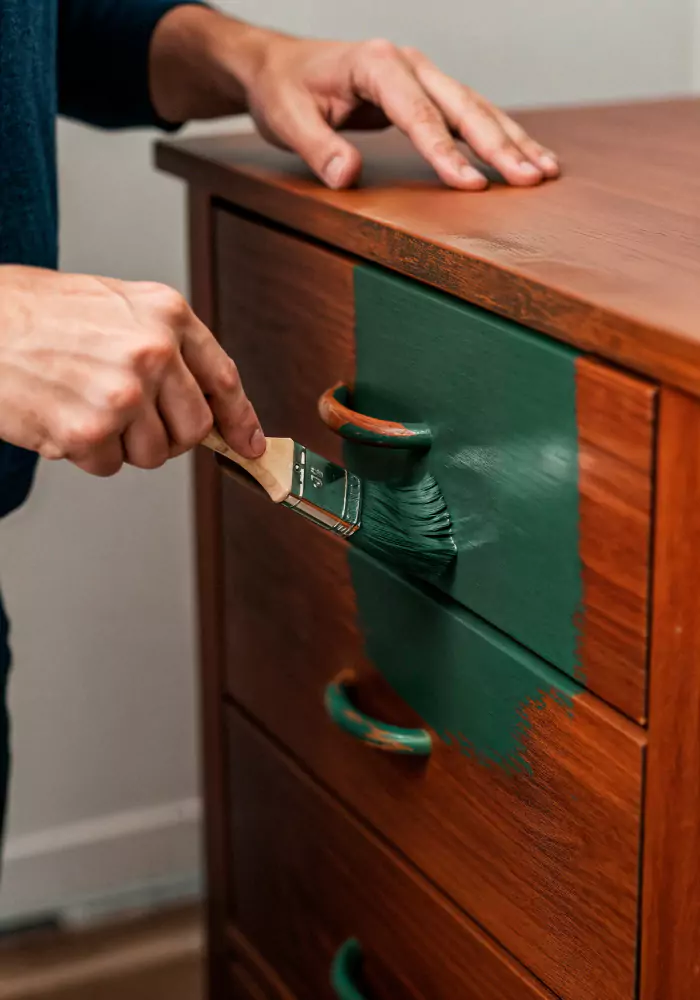
Medium sheens (satin or semi-gloss) are common for easier cleaning and laminate is often found on desks, cabinets, and tables. If you plan to distress edges for a vintage style, Chalk or milk paint formulas can also adhere (with primer) and give a chalky matte finish.
Useful metallic or glossy spray paints (e.g. Rust-Oleum spray enamels) can also be used on laminate in some cases, but still require primer.
Besr paint and primer for laminate furniture
For laminate, use a strong bonding primer: INSL-X STIX® or Zinsser B-I-N® are top choices. For paint: Benjamin Moore Advance, INSL-X Cabinet Coat, Sherwin–Williams Emerald Urethane Enamel, or Rust-Oleum Painter’s Touch (latex enamel) work well.
Chalk-finish brands like Annie Sloan, Fusion Mineral Paint, or Country Chic can also be used (often without sanding). Also, Rust-Oleum Specialty Lacquer Enamels (available in spray cans) bond well to laminate. Cleaners: Simple Green or denatured alcohol are useful pre-paint.
How to Paint Outdoor Furniture
Outdoor furniture requires something special treatment cuz it goes through many changes of weather.
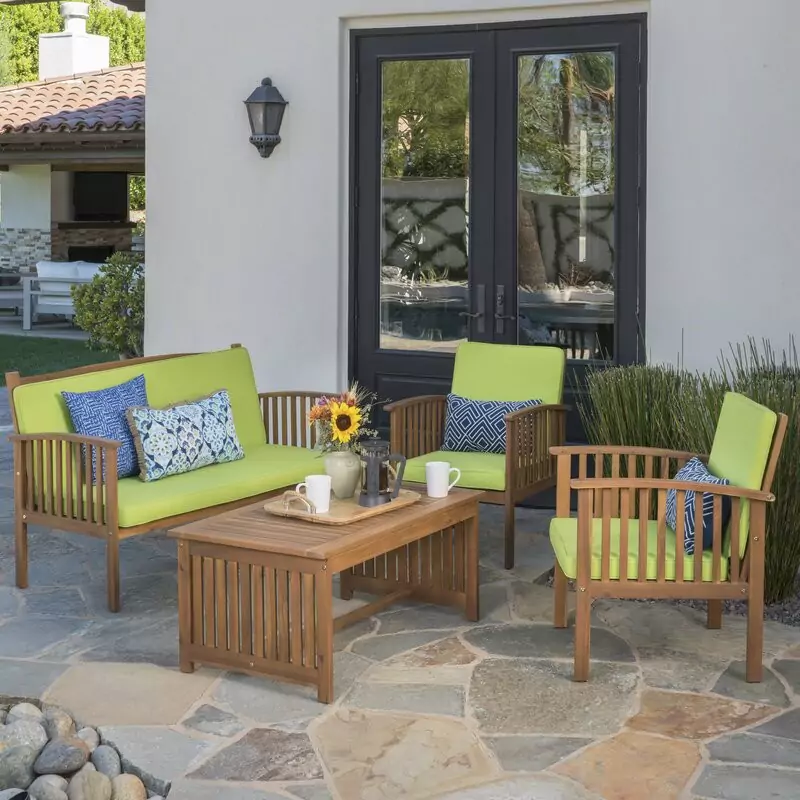
Preparation
Clean heavily – Scrub off the grease or dirt from furniture.
Priming
Prime with an exterior primer: for wood use exterior latex primer (or oil-based on very old/oily surfaces); for metal use rust-inhibiting primer (oil-based for steel). Remember, outdoor wood primer “helps seal the wood and protect it from moisture” which extends patio furniture life.
Paint
Choose exterior paint that is resistant to sun rays and rainy moisture. High-quality exterior acrylic latex (Benjamin Moore Aura or Sherwin SuperPaint) is good even on wood. Oil based metal paint or specific paints that are designed for the metal furniture, you can use it too.
Glossy or semi-gloss finishes are more durable outdoors (they resist mildew and UV fading better).After applying make sure you are giving it enough time to dry the paint . Allow pieces to fully dry (often a week) before exposing them to the weather. If rain is forecast during curing, move furniture under cover or indoors.
Exterior paint is good enough that you don’t need extra coat of finish. (Two coats of exterior paint act as the sealer.)
For extra protection you can apply a clear marine varnish or spar polyurethane on wood seat slats or end-grain edges. For metal, ensure joints and undersides are painted. One DIY tip: paint the underside first, then flip to paint topsides, so all spots get coating.
Recommended Outdoor Paint and primer
Exterior primer like Kilz2, Zinsser 1-2-3, or Rust-Oleum Stops Rust Primer; exterior paints like Benjamin Moore Aura Exterior, Sherwin-Williams Duration or SuperPaint Exterior, Valspar Porch & Patio, or Rust-Oleum Universal All-Surface Spray for touch-ups.
Marine-grade epoxy paint is ideal for boats or near water. For metal patio furniture, consider Rust-Oleum High Heat products for grills or fireplaces, and Krylon Fusion Outdoor for spray painting.
Tips for Indoor Furniture
Indoor furniture don’t go from various weather situations but still benefits from proper prep. Ventilate well when painting indoors. If you want low odor make sure using the Use water-based paints (acrylic or waterborne alkyd) for low odor.
Chalk, milk, and decorative paints (Annie Sloan, Fusion, Rust-Oleum Chalked) are popular for cabinets, dressers and craft projects – these often claim “no primer needed,” but lightly sanding and using a good primer will improve adhesion and durability.
Interior furniture don’t need the same too much protection, but high-traffic items like kitchen chairs or tables should use durable enamel paints and use a final polyurethane or wax coat. Typical indoor sheens are satin or semi-gloss (washable surfaces).
For finishing touches, let painted furniture age 2–4 weeks before cleaning, to reach full hardness. Add new hardware (knobs, handles) or shelf liners once paint is dry. Stenciling or two-tone paint (“ombre” or “color block”) can be done between coats. Always place felt pads under legs on floors.
Summary
Painting furniture well begins with preparation: clean, sand and prime every piece according to its material. Use the right primer (shellac-based for stain-blocking, bonding primer for slick surfaces, rust-inhibiting for metal) and the right paint (acrylic-latex vs. oil, spray vs. brush). Apply multiple thin coats, allow full drying/curing, and finish with suitable topcoats.
Outdoor items demand exterior-grade products and protection from moisture, while indoor pieces allow more finish options (including matte chalk paints with wax sealers).
Popular product lines include Zinsser/Kilz primers, Benjamin Moore (Advance, Regal, Aura), Sherwin-Williams (SuperPaint, ProClassic), Valspar, Rust-Oleum/Krylon spray products, General Finishes, Annie Sloan, and Hammerite (in Europe). With careful prep and quality materials, even a beginner can achieve a lasting, beautiful finish on wood, laminate, or metal furniture.







